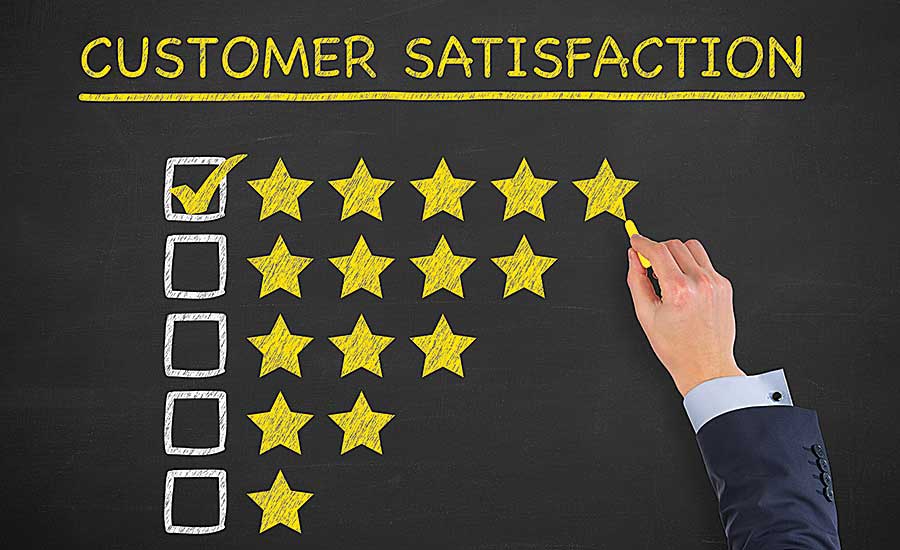Hank Darlington: 9 paths to great customer service

In today’s fiercely competitive world companies spend millions of dollars on the land, building out their showroom, stocking it full of product, all with one thing in mind — the customer.
But when the customer actually visits the showroom, the folks working there often fall down on the job. All that time, thought and money is wasted if the customer walks out — never to return again.
Competitive pricing, advertising, websites, merchandising, location, products and services attract customers only once. The quality of personal relationships (service) is what brings them back.
There is a direct connection between customer service — or lack of it and money made or lost. You must make sure you don’t lose money because you did not invest in developing superior customer-service skills for your entire team — and building a customer-driven organization. You cannot pay lip service to great customer service! You have to build (from the top down and vice-versa) a culture of rendering great customer service.
A Harris introspective study finds the main reason past customers recommend a company is because they’ve had an outstanding service experience. Also, it’s interesting to learn the same study reveals 86% of customers claim they would pay more for a better customer experience.
On the other hand, an even more surprising statistic is 89% of customers surveyed say they would stop doing business with a company after only one bad experience. It’s hard to believe, but 79% of customers who shared complaints online had their complaints ignored. If the complaint gains visibility — or worse goes viral — it can impact thousands of potential customers, hurt future revenues and tarnish the value of the company‘s reputation.
How is your customer service? Do you even know? The way to find out is to conduct your own survey of customer satisfaction. When I owned my business we developed a “customer satisfaction” survey. On all orders of $2,500 or more we sent the client a cover letter from me, thanking them for their business. We also included a 10-question, easy-to-answer, survey asking to check excellent, good, fair or poor beside each question.
We allowed space below each question so customers could elaborate on their answers. As an incentive to complete the survey we offered a $15 gift certificate to Starbucks. We also included a self-addressed, stamped envelope. On all negative “I had a bad experience” responses, I personally called the customers to be sure the situation had been handled to their satisfaction.
There’s a great book on the subject titled “Achieving Excellence through Customer Service” by John Tschohl. If you’re serious about wanting to render great customer service buy it and read it! I’ve “borrowed” a few facts and ideas from John’s book.
You might also conduct an in-house self-assessment with your whole team to get their input as to whether you’re meeting your service goals.
Think about the experience you have at Costco where customers push giant carts through huge aisles all stocked with value-priced products. This is a very different experience than the one you get at an Apple store where customers see a much smaller selection of pricey products and get expert assistance. Costco‘s customer experience ties in with its strategy to be a cost leader while Apple’s strategy is innovation.
Companies such as Disney, Zappos, Southwest Airlines, Ritz Carlton and FedEx all point to their customer-centric cultures as key to their success. That’s because this discipline turns customer-experience excellence into a habit and makes future changes easier by creating a system that is receptive to customer-experience improvement efforts.
Amazon has done a great job of creating a culture of shared values and behaviors that focus employees on delivering great customer experiences — every time! These companies have built such an outstanding culture that not only do people love to work there, they also love to shop there. They are their own best customers.
Each of these companies has a set of practices that helps them manage customer experiences in a proactive and disciplined way. They get rid of stupid, ineffective rules and practices and hold people accountable for their roles in customer-experience practices. It helps keep bad experiences from getting out the door and helps employees assist in creating new and innovative approaches that will have a profound impact on the customer experience.
Almost everyone in the showroom business spends time, energy and dollars on product-knowledge training. How many of you have written practices and systems that will generate great customer service? That’s what I was afraid of — not many.
This should come as no surprise — excellent customer service creates loyal customers for life. These are customers who are willing to refer your business to friends, family and colleagues. Providing this type of customer service starts with a genuine desire to delight your customers, but you need to think beyond selling your products and services. You need to consider the cumulative experiences your customers have when they visit your showroom or website — what they think and feel, and what you can do to make it better.
Put it to the test
Here are several ways you can learn more about your customers and start to create excellent customer service at your business.
Know your products and services: In order to provide great customer service you have to know your products — inside and out. Most of you do a pretty good job with product knowledge. At our business we did a team meeting every Friday from 8-9 a.m. Most of these meetings were PK-driven. We also did how-to-sell training which is one of the most important things you can do to ensure success. The reps calling on us would sign up several months in advance to get on our PK training schedule. We did know our products — inside and out!
Be friendly: It’s been said and I believe it: Customer service starts with a smile. When you’re in a face-to-face situation, a warm greeting should be the first thing your customer hears and sees when they come through your front door. Even when handling customer-service requests via telephone, texts and emails — a smile can come through in your voice or what you write. Be sure to be friendly — all the time!
Say thank-you: Gratitude is memorable and it can remind your clients why they shopped at your showroom. Saying thank-you either verbally or via a handwritten note or a small thank-you gift after every transaction is one of the easiest ways to start a habit of good customer service. I call it “after-the-sale follow-through.” The aforementioned customer-satisfaction survey is a nice way to say thanks and to learn what customers think of your service.
Train your team: It’s important to make sure that everyone understands the way they should talk to, interact with and problem-solve with customers. In the past I have “preached” empowering your staff to handle problems (situations) by themselves. They shouldn’t have to search out a boss to handle customer problems. Make problems go away ASAP.
Show respect: Often, customer service can involve emotions — both your team members and the customers. It’s important to make sure everyone on the team always is courteous and respectful. Never let your own emotions overtake your desire to see your client walk away happy and satisfied.
Listen: Listening is one of the simplest secrets of good customer service. Listening means hearing what your customers are saying out loud, as well as what they are nonverbally communicating. Watch for signs that they are displeased while listening to what they say to you directly. Facial expressions, tone of voice and body language will help tell you what the client is feeling. This is all part of listening.
Be responsive: There may be nothing worse than non-responsiveness to a customer who is trying to get help or resolve a problem. It’s important to respond quickly to all comments and concerns — even if it is just to say you’ll look into the issue and get back to them. If you’ve been empowered to act, this shouldn’t happen very often. Some response is better than none — so the customer doesn’t feel ignored.
Ask for feedback: Back to the customer-satisfaction survey form and letter. You’ll be surprised by how much you’ll learn when you ask them what they thought of your products and services. But don’t wait for the form to go out and come back, ask your clients — now — what they thought/think of your service.
Use the feedback you receive: Make notes on the feedback you get and share it with team members and management. If you do use the customer-satisfaction survey — review the feedback in a timely manner. Identify areas that can be improved and implement new policies.
Great customer service means consistently checking with your customers and making sure they are happy, not only with your products and services, but also with the timeliness of receiving products all the way through to delivery, the paperwork involved, how you, the salesperson, has done, etc.
You’ll know when you’re delivering great customer service. Sales will go up and clients will be referring their friends and relatives to you. Remember — service with a smile.
Good selling!
Looking for a reprint of this article?
From high-res PDFs to custom plaques, order your copy today!




